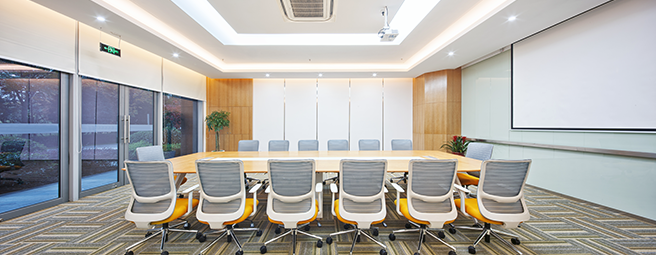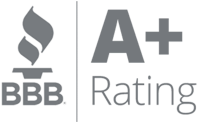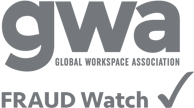
How to Set Up a Room for a Meeting: 20 Tips for Maximum Productivity
The success of your next meeting starts before anyone walks through the door. Research shows that poorly organized meetings cost U.S. businesses over $37 billion annually, with room setup playing a crucial role in determining whether your gathering will be productive or problematic.
Whether you're hosting a board meeting, leading a team brainstorming session, or facilitating a client presentation, the physical environment directly impacts engagement, communication, and outcomes. A well-prepared meeting room can boost productivity by up to 25%, while a poorly configured space can derail even the most important discussions.
This guide provides a 20-step checklist to transform any space into a meeting-ready environment. From selecting the optimal layout to ensuring remote meeting capabilities, these proven strategies will help you create a professional atmosphere that supports your objectives. Plus, discover how reserving a fully equipped meeting room can eliminate the setup hassle entirely.
Why Meeting Room Setup Matters More Than You Think
The meeting room environment shapes participant behavior from the moment they enter. Poor acoustics can prevent clear communication, inadequate lighting strains eyes during presentations, and uncomfortable seating leads to distracted attendees. These seemingly minor details compound into major productivity barriers.
Consider the hidden costs of suboptimal meeting spaces: extended meeting durations due to technical difficulties, reduced participation from uncomfortable attendees, and damaged professional relationships when presentations fail. Studies indicate that 67% of senior managers report spending too much time in meetings, making efficient room setup essential for maximizing valuable time.
First impressions matter significantly in business settings. A thoughtfully arranged meeting room communicates professionalism, attention to detail, and respect for attendees' time. This environmental psychology influences how participants perceive both the meeting's importance and your organizational competence.
20-Step Meeting Room Setup Checklist
Planning Phase: Foundation for Success
1. Define the Meeting's Purpose and Requirements
Start by clarifying your meeting's specific objectives and constraints. Different meeting types require distinct spatial arrangements—a creative brainstorming session needs collaborative flexibility, while a formal board meeting demands structured seating and clear sight lines to presentation materials.
Document your attendee count, including any special accessibility needs, dietary restrictions, or technology requirements. Consider whether participants will need laptop space, note-taking surfaces, or breakout areas for smaller group discussions.
Pro Tip: Davinci Meeting Rooms' online inventory system allows you to filter available rooms by meeting type, capacity, and specific amenities, ensuring the perfect match for your event requirements.
2. Select the Right Room Layout
Your room layout should support your meeting's primary activities. The traditional boardroom style works well for formal discussions and presentations, with all participants facing a central point. U-shaped configurations encourage interaction while maintaining presentation focus, ideal for training sessions or workshops.
Classroom layouts maximize capacity for information-sharing meetings, while round table arrangements promote equality and collaborative discussion. Consider hybrid layouts that can adapt as your meeting progresses through different phases.
Pro Tip: Davinci Meeting Rooms come pre-configured in various professional layouts, eliminating the time and effort required for furniture rearrangement.
3. Measure and Plan the Space
Accurate room measurements prevent overcrowding and ensure smooth traffic flow. Create a simple floor plan showing table placement, chair positioning, and equipment locations. Allow adequate space for people to move around comfortably; cramped conditions reduce engagement and create distractions.
Factor in space for presentation equipment, catering stations, and any materials or displays you'll need. Consider sight lines from every seat to ensure all participants can see presentations and each other clearly.
Physical Setup Phase: Comfort and Accessibility
4. Arrange Furniture for Comfort and Accessibility
Ergonomic seating directly impacts participant comfort and attention span. Choose chairs with proper lumbar support and adjustable heights. Position tables at comfortable working heights, allowing adequate legroom and elbow space for notetaking.
Ensure your layout complies with ADA accessibility standards, providing wheelchair-accessible seating options and clear pathways. Remove any obstacles that might impede movement or create safety hazards.
Pro Tip: Davinci Meeting Rooms conference rooms feature ergonomic furniture and accessible layouts designed for maximum comfort and compliance with accessibility standards.
5. Optimize Lighting Conditions
Proper lighting prevents eye strain and ensures clear visibility of both presentation materials and participants' faces. Natural light creates a pleasant atmosphere, but control glare with blinds or curtains to prevent screen washout during presentations.
Adjust artificial lighting based on your meeting's primary activities. Brighter lighting works well for note-taking and detailed discussions, while dimmer settings may be appropriate for presentation viewing. Test lighting conditions from multiple seating positions to identify potential issues.
6. Ensure Proper Ventilation and Temperature Control
Poor air quality and uncomfortable temperatures quickly diminish meeting effectiveness. Test your HVAC system in advance, setting the temperature slightly cooler than normal to accommodate body heat from multiple occupants.
Ensure adequate ventilation throughout the meeting space, particularly in smaller rooms where air can become stagnant. Consider the impact of external factors like weather, building heating systems, and electronic equipment that generates heat.
7. Stage Power Hubs and Charging Stations
Modern meetings require reliable power access for laptops, tablets, and mobile devices. Position power outlets and charging stations within easy reach of every seat, using extension cords and power strips as needed while maintaining safety standards.
Organize cables to prevent tripping hazards and visual clutter. Consider providing USB charging options alongside traditional power outlets to accommodate various device types.
Pro Tip: Davinci Meeting Rooms conference tables include built-in power modules and charging solutions, eliminating the need for messy cable management.
Technology Phase: Seamless Connectivity
8. Pre-Test All AV Equipment
Technical difficulties can derail even the most well-planned meetings. Create a comprehensive inventory of all audiovisual equipment including projectors, screens, microphones, speakers, and cameras for remote participants.
Test each component individually, then run through your complete presentation setup under actual meeting conditions. Document optimal settings for quick troubleshooting and create backup plans for common technical issues.
Verify that all remote meeting platforms function correctly, testing both audio and video quality. Ensure your internet connection can handle the bandwidth requirements for your expected number of participants.
Pro Tip: Davinci Meeting Rooms meeting spaces include pre-tested AV technology with on-site technical support, eliminating the risk of equipment failures during critical meetings.
9. Set Up Reliable Wi-Fi and Connectivity
High-speed internet access is essential for modern meetings, supporting everything from cloud-based presentations to video conferencing. Test internet speeds from multiple locations within the room to identify any dead zones or weak signal areas.
Display network credentials clearly, ideally on a whiteboard or tent cards at each seat. Consider providing guest network access for external attendees while maintaining your organization's security protocols.
Pro Tip: Every Davinci Meeting Rooms’ space includes secure, high-speed Wi-Fi with dedicated technical support staff available to address any connectivity issues.
Materials and Supplies Phase: Everything You Need
10. Provide Writing Surfaces and Supplies
Equip your meeting space with adequate writing surfaces including whiteboards, flipcharts, and individual notepads. Ensure you have working markers, pens, and erasers available, with extras on hand for longer meetings.
Position writing surfaces where all participants can see them clearly and consider providing sticky notes and other brainstorming tools for interactive sessions.
Pro Tip: Davinci Meeting Rooms come fully stocked with presentation supplies and writing surfaces, eliminating last-minute supply runs.
11. Organize Presentation Materials
Load all digital presentations onto your primary device and create backups on secondary systems or cloud storage. Test file compatibility and ensure all multimedia elements function correctly within your presentation software.
Prepare printed handouts in advance, distributing them strategically based on your meeting flow. Consider whether materials should be available upon arrival or distributed at specific points during the discussion.
12. Prepare Refreshments and Water
Proper hydration and light refreshments can significantly impact meeting energy levels and participant comfort. Set up water stations accessible to all attendees, and consider providing coffee, tea, or light snacks for longer sessions.
Account for dietary restrictions and allergies when planning refreshments. Position food and beverages away from technology and important documents to prevent spills and damage.
Pro Tip: Many Davinci Meeting Rooms offer catering services and refreshment options as convenient add-ons to your room reservation.
Final Preparation Phase: Last-Minute Details
13. Set Up Signage and Directions
Clear wayfinding helps attendees arrive on time and reduces disruptions from people searching for the meeting location. Place directional signs at key decision points, including building entrances, elevator banks, and corridor intersections.
Create professional room identification signage that includes the meeting title, time, and any special instructions. Consider digital displays for frequently used meeting spaces.
14. Review Health, Safety, and Cleanliness
Sanitize all surfaces, particularly high-touch areas like door handles, table surfaces, and shared equipment. Provide hand sanitizer stations and ensure the space meets current health protocols.
Verify that emergency exits are clearly marked and unobstructed. Check that first aid supplies are accessible and that all safety equipment functions properly.
15. Arrive Early for Final Walkthrough
Plan to arrive at least 30 minutes before your meeting begins for a comprehensive final check. Review every element of your setup, from lighting and temperature to technology and materials.
Use this time to address any last-minute issues and to greet early arrivals personally. A calm, prepared host sets a positive tone that influences the entire meeting's success.
16. Prepare a Backup Plan for Technology Failures
Technical issues can derail even the best-planned meetings. Prepare spare cables, adapters, and backup devices for common connectivity problems. Have alternative presentation methods ready, such as printed materials or flip charts, in case digital systems fail.
Document contact information for technical support and establish clear procedures for quickly addressing equipment failures during your meeting.
Pro Tip: Davinci Meeting Rooms provides on-site technical support staff who can quickly resolve unexpected technology problems without disrupting your meeting flow.
17. Set Up a Registration or Check-In Area
Create a professional first impression with a designated check-in area near your meeting room entrance. Organize name tags, sign-in sheets, and any materials attendees need upon arrival.
Position this area to facilitate smooth traffic flow and prevent congestion at the meeting room entrance. Consider having a staff member or volunteer manage the check-in process for larger meetings.
Pro Tip: Davinci Meeting Rooms include lobby greeters who are highly professional and can provide check-in services as part of their meeting support.
18. Ensure Accessibility for All Attendees
Verify that your meeting location is fully accessible to attendees with disabilities. Check that elevators are functioning, accessible restrooms are available, and parking spaces are designated for accessibility needs.
Check that meeting materials are provided in accessible formats and consider using assistive listening devices for participants with hearing impairments.
Pro Tip: Davinci Meeting Rooms comply with accessibility standards and provide accommodations to ensure all attendees can participate fully.
19. Incorporate Privacy Measures
Protect sensitive discussions by implementing appropriate privacy measures. Use soundproofing materials where possible, position privacy screens to prevent visual intrusion, and post clear signage indicating private meetings in progress.
Consider the location of your meeting room relative to high-traffic areas and take steps to minimize interruptions from outside noise or foot traffic.
Pro Tip: Davinci Meeting Rooms offer private, secure meeting spaces specifically designed for confidential discussions and sensitive business matters.
20. Provide Remote Meeting Capabilities
Modern meetings often include remote participants, making hybrid meeting capabilities essential. Set up and test video conferencing equipment, ensuring both audio and video quality meet professional standards.
Cameras should be arranged to include all in-person participants, and the setup can be tested with remote attendees prior to the meeting. Prepare backup communication methods in case primary systems fail.
Pro Tip: Davinci Meeting Rooms include integrated video conferencing equipment and technical support to ensure seamless hybrid meeting experiences.
Common Meeting Room Setup Mistakes to Avoid
Even experienced meeting organizers can fall into predictable traps that compromise meeting effectiveness. Inadequate testing time often leads to technical difficulties that consume valuable meeting minutes and frustrate participants. Always allocate sufficient time for thorough equipment testing and troubleshooting.
Poor acoustics consideration can render even the best-planned meetings ineffective. Test audio levels from various seating positions and account for how sound changes when the room fills with people. Hard surfaces create echo and reverberation that can interfere with clear communication.
Insufficient power access forces participants to ration device usage or leave meetings to charge essential equipment. This disruption breaks concentration and can cause important contributors to miss key discussions.
Uncomfortable seating arrangements may seem minor but significantly impact participant engagement over time. Chairs that are too low, too high, or lack proper support lead to fidgeting, poor posture, and reduced attention spans.
Skip the Setup Hassle with Davinci Meeting Rooms
Why invest hours in meeting room preparation when professional alternatives deliver superior results with minimal effort? Davinci Meeting Rooms provides fully equipped, professionally maintained meeting spaces that address every item on this checklist.
Their comprehensive service includes pre-configured layouts, tested AV equipment, reliable high-speed internet, and professional support staff. With locations worldwide, you can maintain consistent meeting standards regardless of your location.
The booking process takes minutes through their online platform, and their flexible options accommodate everything from small team meetings to large presentations. Optional services like catering, technical support, and administrative assistance further streamline your meeting logistics.
Focus on What Really Matters
Successful meetings require careful preparation, but that preparation doesn't have to consume your valuable time. By following this 20-step checklist, you can transform any space into a productive meeting environment. However, the most efficient approach may be to reserve a professionally prepared space that meets all these requirements from the start.
Explore Davinci Meeting Rooms inventory to find the perfect space for your next important meeting. With a professionally set up room, you can focus on your meeting goals and business growth.
Frequently Asked Questions (FAQs)
1. How far in advance should I start setting up my meeting room?
Begin your meeting room setup at least two to three hours before the scheduled start time for important meetings, allowing sufficient time for testing equipment and addressing any unexpected issues. For routine meetings, arriving 30 to -45 minutes early is typically adequate for a final walkthrough and minor adjustments.
2. What's the most important element to test before a meeting begins?
Audiovisual equipment should be your top priority since technical failures are the most disruptive and difficult to resolve quickly during a meeting. Test all projectors, microphones, speakers, and internet connectivity under actual meeting conditions to ensure everything functions properly.
3. How can I ensure my meeting room is accessible for all attendees?
Verify that your meeting location has wheelchair access, accessible restrooms, designated parking spaces, and functioning elevators. Additionally, ensure meeting materials are available in accessible formats and consider providing assistive listening devices for participants with hearing impairments.
4. What's the ideal temperature for a meeting room?
Set the room temperature slightly cooler than normal comfort levels, typically around 68° to 70°F (20°-21°C), to account for body heat generated by multiple occupants. Test the HVAC system in advance and ensure adequate ventilation, especially in smaller spaces where air can become stagnant.
5. How many people should I invite to ensure an effective meeting?
Follow the "two-pizza rule" – invite only as many people as can be fed with two pizzas, typically six to eight participants maximum for optimal discussion and decision-making. Each attendee should have a clear role and specific contribution to the meeting's objectives rather than attending just to "stay in the loop."
Related Resources
How Big Should a Conference Room Be?
https://www.davincimeetingrooms.com/blog/how-big-should-my-conference-room-be
11 Types of Office Spaces to Consider for Your Business
https://www.davincimeetingrooms.com/blog/11-types-of-office-workspaces-to-consider-for-your-business
How to Set Up a Hybrid Conference Room
https://www.davincimeetingrooms.com/blog/what-is-a-hybrid-meeting-room-how-to-set-one-up
12 Meeting Room Setups and Styles
14 Questions to Ask When Renting a Meeting Space
https://www.davincimeetingrooms.com/blog/14-essential-questions-to-ask-when-renting-office-space

Categories
Subscribe to Our Blog
Archive

- November 2025
- October 2025
- September 2025
- August 2025
- July 2025
- June 2025
- May 2025
- April 2025
- March 2025
- February 2025
- January 2025
- December 2024
- November 2024
- October 2024
- September 2024
- August 2024
- July 2024
- June 2024
- May 2024
- April 2024
- March 2024
- February 2024
- January 2024
- December 2023
- November 2023
- October 2023
- September 2023
- August 2023
- July 2023
- June 2023
- May 2023
- April 2023
- March 2023
- February 2023
- January 2023
- December 2022
- November 2022
- October 2022
- September 2022
- August 2022
- July 2022
- June 2022
- May 2022
- April 2022
- March 2022
- February 2022
- January 2022
- December 2021
- November 2021
- October 2021
- September 2021
- August 2021
- July 2021
- June 2021
- May 2021
- April 2021
- March 2021
- February 2021
- January 2021
- December 2020
- November 2020
- October 2020
- September 2020
- August 2020
- July 2020
- June 2020
- May 2020
- April 2020
- March 2020
- February 2020
- January 2020
- December 2019
- November 2019
- October 2019
- September 2019
- August 2019
- July 2019
- June 2019
- May 2019
- April 2019
- March 2019
- February 2019
- January 2019
- December 2018
- November 2018
- October 2018
- September 2018
- August 2018
- July 2018
- June 2018
- May 2018
- April 2018
- March 2018
- February 2018
- January 2018
- December 2017
- September 2017
- June 2017
- April 2017
- October 2016
- July 2016
- May 2016
- April 2016
- February 2016
- November 2015
- September 2015
- February 2015
- January 2015
- December 2014
- November 2014
- October 2014
- August 2014
- July 2014
- July 2013
- May 2013
- February 2013
- December 2012
Talk to an expert
Want help finding the ideal meeting room? Give us a call
Book the Perfect Meeting Room Now
Find a Meeting Room








